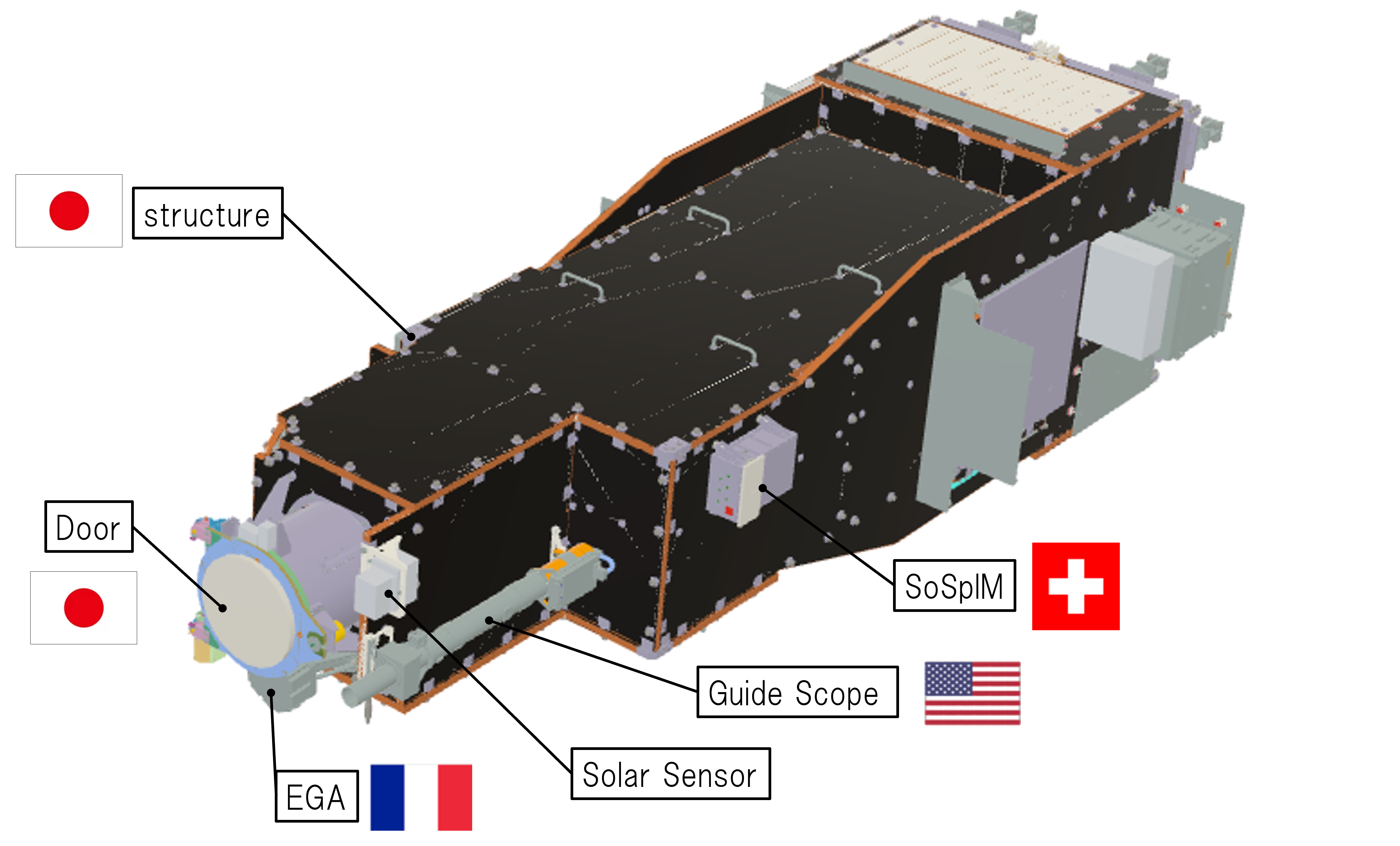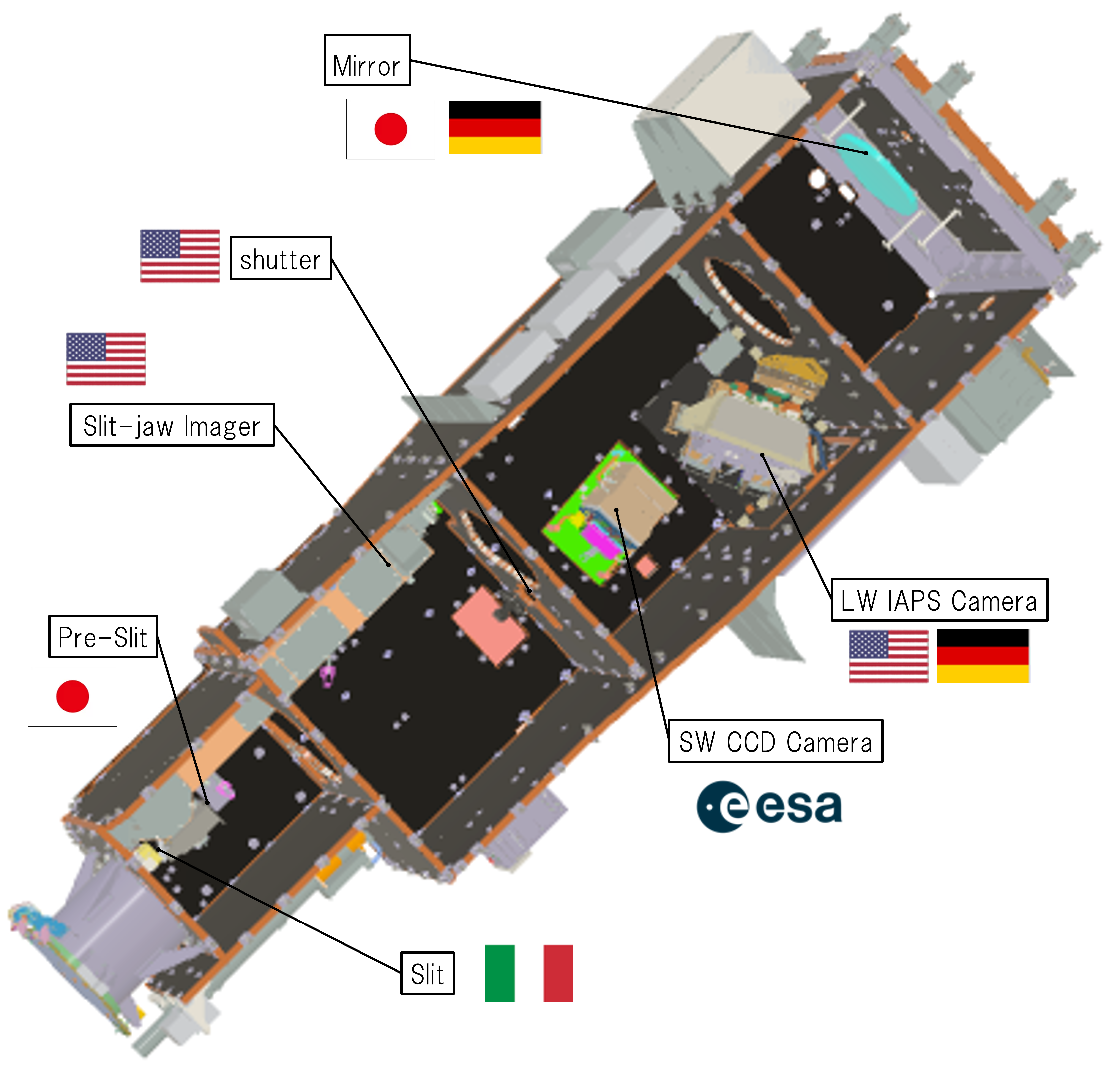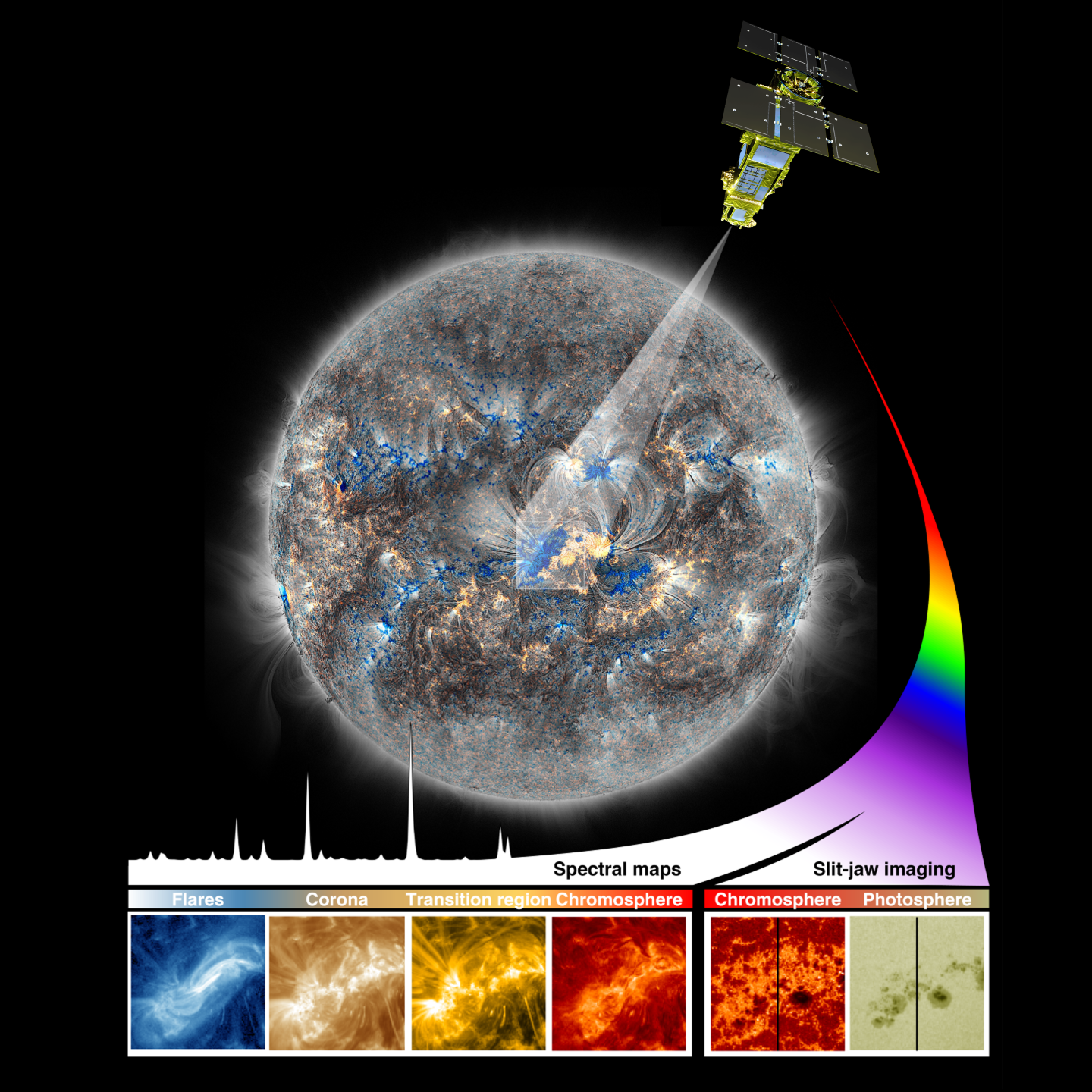Instruments
EUVST observes the Sun’s different temperatures, simultaneously, seamlessly, with high temporal and spatial resolution.
01. Overview


SOLAR-C is a mission of international cooperation, in which the telescope development is done by the Japanese team lead by NAOJ and ISAS/JAXA and the spectrometer development is performed by the US and European institutes. The largest feature of its telescope EUVST is that it has the minimum optical elements, i.e., the primary mirror and the diffraction grating, and does not require filters, so that it can collect as much solar UV radiation as possible (Fig.1, Tab.1, and Tab.2). These efforts will realize effective areas of 10-30 times larger than previous instruments and achieve the spectroscopy with high spatial (0.4 arcsec at maximum) and temporal (less than 1 sec) resolution. In addition, by detecting a variety of emission lines in the EUV range, EUVST will seamlessly observe the wide temperature range from the chromosphere (about 10,000 Kelvin), the corona (about 1 million Kelvin), and even the flare plasmas (about 10 million Kelvin). In fact, the simultaneous spectroscopy from the solar chromosphere to the corona and the flares at the 0.4″ resolution is the first attempt in the world. Moreover, the slit-jaw imager will return images of the photosphere and chromosphere, which will facilitate detailed coordinated observations with other solar satellites and ground-based telescopes. Through the three axis attitude control of the spacecraft and the tip-tilt control of the primary mirror, the telescope is always targeted to the Sun with high accuracy.
| Target launch | |
|---|---|
| Date | Mid-2020s |
| Launcher | Epsilon S launch vehicle |
| Orbit | Sun-synchronous orbit (>600 km altitude) |
| Mission life | 2 years |
| Spacecraft | |
| Weight | 500 kg (approx) |
| Height | 4.8 m (approx) |
| Telescope | ||
|---|---|---|
| Diameter of the Primary Mirror | 28 cm | |
| Primary Focal Length | 280 cm | |
| Spectrograph | Slit-jaw Imager | |
| Spatial resolution | 0.4 arcsec | 0.4 arcsec |
| Temporal resolution | 1 sec | 1 sec (Maximum) |
| Spectral bands | 17 - 21.5 nm(EUV) 46 - 122 nm(VUV) |
283.3 nm (Continuum) 285.2 nm (Mg I) 279.6 nm (Mg II) |
| Spectral resolution (λ/Δλ) |
nearly 5000(EUV) nearly 10,000(VUV) |
|
| Bandwidth | 0.2 nm | |
| Temperature coverage | 20,000 - 15,000,000 K | 5,000 - 10,000 K |
| Field of View | 280″ × 280″ (Maximum) | 300″ × 300″ (Maximum) |
In addition, the Solar Spectral Irradiance Monitor (SoSpIM: Tab. 3), which monitors the UV radiation from the entire solar disk, is planned to be installed. With this instrument, we will be able to perform calibrations of EUVST data and observations of UV radiation associated with solar flares with a high temporal cadence.
| Spatial resolution | Full solar disk observation as a star |
|---|---|
| Temporal resolution | 100 ms |
| Spectral range | 17.0 - 21.5 nm 111.5 - 127.5 nm |
| Spectral line peak | 17.1 nm 121.6 nm (Hydrogen Lyman-alpha) |
| Characteristic temperature | 1,000,000 K 30,000 K |
02. Spatial Resolution Increases about Seven Times Better

EUVST’s 0.4″ spatial resolution is seven times better than that of Hinode’s EUV Imaging Spectrometer (EIS: about 2 arcsec), meaning that a single pixel of EIS is now resolved by about 50 pixels by EUVST. With this augmentation, we will be able to spatially resolve the fine magnetic structures that transport the material and energy and the detailed substructures of magnetic reconnection, which are essential in understanding the coronal heating and flare eruptions. This is as if we understand the biological characteristics of sunflower by accurately resolving the substructures such as the florets and the seeds.
03. Wide Temperature Range from the Chromosphere to the Corona and the Flares, Simultaneously and Seamlessly

By performing the EUV spectroscopy, EUVST will simultaneously and seamlessly diagnose the wide temperature range from the 10,000-Kelvin chromosphere to the million-Kelvin corona, and even to the 10 million-Kelvin temperatures of solar flares, which will enable the continuous tracking of material and energy transport. In addition, from the slit-jaw images, we will be able to observe the entire spatial structure of the observational targets.
04. Effects of Solar Radiations to the Earth
The Solar Spectral Irradiance Monitor (SoSpIM) will measure the solar irradiance for the “Sun as a star.” The EUV channel will measure the coronal emission, which affects the thermosphere of Earth’s upper atmosphere, while the Lyman-alpha channel will focus on the emission from the chromosphere, which affects the Earth’s mesosphere. These observations with a subsecond cadence allow us to study the highly dynamic evolution of solar flares and eruptions, and the relationship between the flares and Earth’s atmospheric response.

